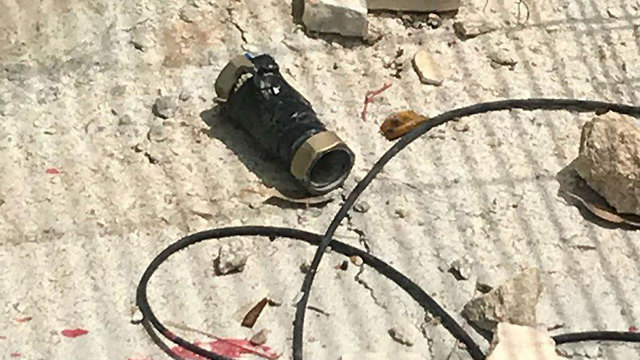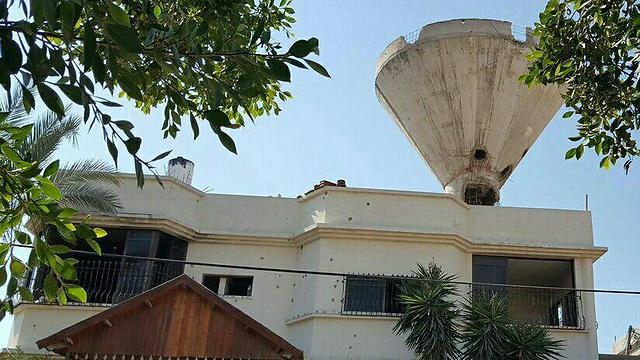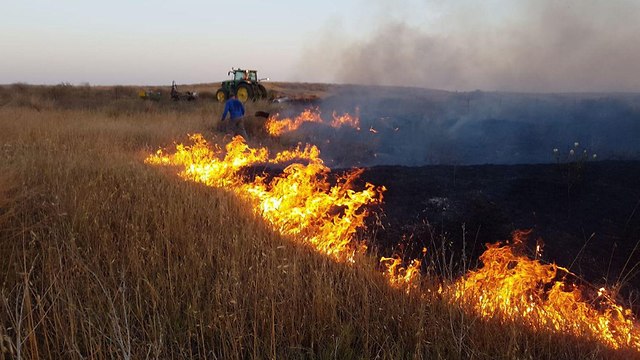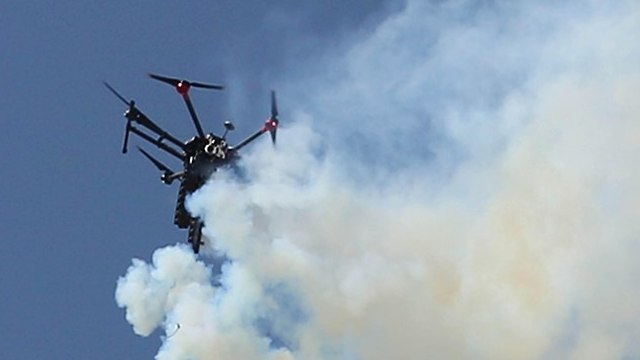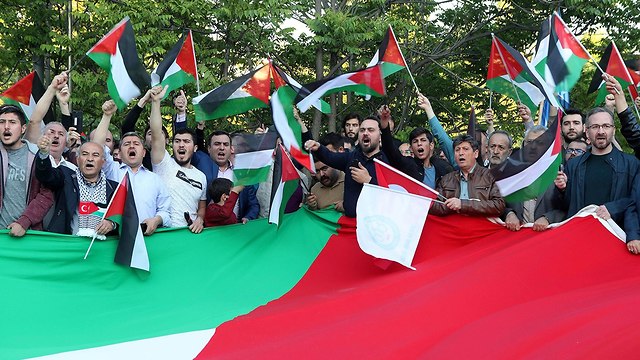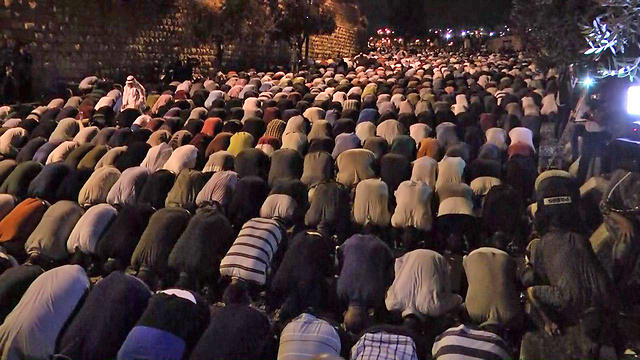
Security forces remain on high alert in Jerusalem, Gaza border and West Bank despite apparent calm
Gaza border protests set to recommence in late afternoon due to heat, Ramadan fast; police, army reinforcements arrive to West Bank, Jerusalem's Old City as well; data obtained by Ynet showed that more than 100 explosive devices were placed near the border in past 8 weeks; Egypt orders Rafah crossing to remain open throughout Ramadan.
In honor of Ramadan, Egyptian President Abdel Fattah al-Sisi ordered on Thursday that the Rafah border crossing with the strip be opened for the entirety of the Muslim holy month, he said on his official Twitter account.
The border with the Palestinian territory is mostly shut but opens at regular intervals. This would be the longest single opening in years.
Sisi's Twitter account said the opening of the crossing would "alleviate the burdens of brothers in Gaza."
Egypt closed the border for long periods after attacks on Egyptian security forces in the Sinai Peninsula that increased in 2013, with Egyptian officials blaming Palestinian militants from Gaza for some of them.
The Gaza Division, meanwhile, is gearing up for a Palestinian return to rioting, albeit of a much lesser severity. Several thousand Palestinians are expected to approach the fence and try to break through in several areas.
Soldiers from the Givati Brigade remained stationed in the communities around Gaza to provide reinforcements for the Golani Brigade and an Armored Corps brigade, with Southern Command assessing confrontations may begin at a later time—around 5pm—due to the breaking of the Ramadan fast in the early hours of the evening.
The IDF further estimated that Hamas will keep the border protests simmering on a low heat, at least until Naksa Day at the beginning of next month, marking the Arab defeat in the 1967 Six Day War.
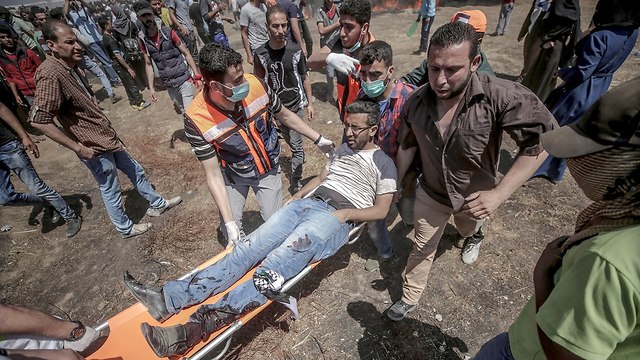
Echoing this assessment, Dawoud Shehab—a member of the protests' organizing committee—said activities at the encampments would get under way only in the late afternoon when temperatures drop. Late-night prayers will also be held there, he added.
"The marches are continuing and there are calls on people to gather in mass on Friday in a day we have dedicated to glorifying the martyrs," Shehab told Reuters.
The message was echoed in appeals blared by loudspeakers on vehicles that drove into Gaza neighborhoods to urge people to turn out. Organizers said the protest would stretch into June.
After the bloodiest day for Palestinians in years on Monday, when 61 were killed by Israeli gunfire during mass demonstrations that Israel said included attempts to breach its frontier fence, calm and a heat wave descended on the area.
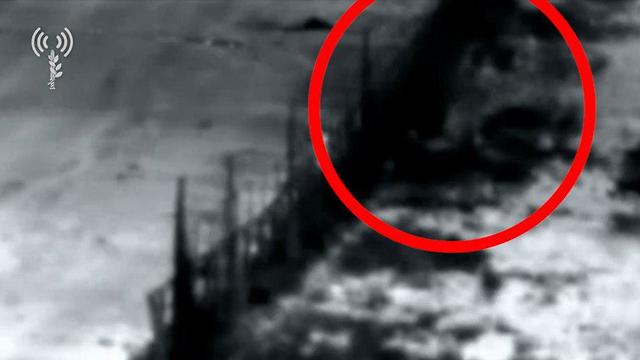
Organizers of the protests that began on March 30 set Friday as a day to honor the dead and urged Gazans to flock again to the tent cities.
But Ramadan traditions—prayer, family visits and feasts—seemed to keep crowds away during the hot hours. At one encampment, about 70 young men filled sandbags in anticipation of people returning to the protest sites.
"We are making a sand barrier so people can feel a bit safer," one of the men said, declining to give his name.
Forces remain on high alert despite relative calm
However, even if the number of protesters remained low, the severity of violence and fence incidents may become more serious compared to Wednesday's clashes, with two incidents of shots being fired at IDF forces.Southern Command estimated that Hamas was now at a crossroads, and will decide on its next moves only after it completely exhausts the March of Return—planned and conceived by the terror group's Gaza leader Yahya Sinwar.
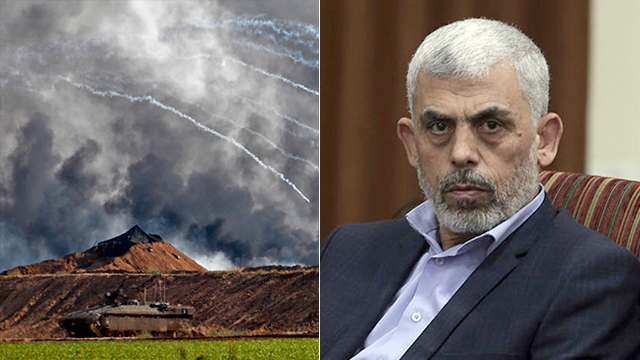
Sinwar was also the one who gave word to decrease the severity of confrontations, after it became apparent the Gazans were unsuccessful in breaking through the fence and entering Israel.
The Judea and Samaria Division will also remain on high alert throughout the weekend, as the first Friday of Ramadan has historically been combustible. Hundreds of reinforcement soldiers, including some from the Nahal Brigade, have deployed throughout the West Bank since the week's beginning.
It will be possible for only Muslims to pray at the Cave of the Patriarchs in Hebron in honor of the holiday, with further relief measures being afforded to thousands of Palestinians. In so doing, the IDF is seeking to cool off the heated airs of the past week.
Hamas attempting to continue its momentum
The Gaza Division is pleased with its performance this week, but is also seeking to draw some conclusions on how to better meet the goals set before them.
Data obtained by Ynet showed that in the past six weeks, Hamas operatives have placed more than 100 explosive charges along the border under the protests' cover, including large roadside charges.
All told, 16 terrorist activities took place in the past six weeks in the Gaza Division's territory, including setting off charges, firing at Israeli forces, downing of a handful of army drones and sabotaging military and civilian infrastructures, such as the three times the Kerem Shalom goods border crossing had been torched.
The goal of the Gaza-ruling terror group was now said to be carrying on the riots' momentum, even if in decreased doses.
Having said that, examining the complex intelligence campaign waged by the Gaza Division since Hamas began its push for the fence in late March showed how much the border riots were an unprecedented occurrence the likes of which the IDF had never dealt with.
Due to the riots' semi-military and semi-civilian nature, the division's command headquarters inaugurated a special intelligence operations room, corralling all aspects of intelligence work—from signals intelligence and drone photography to combat collection in the field by observations and poring over footage captured by the Palestinians themselves in live Facebook feeds or on Arab media.
The division's intelligence showed how Hamas prepared—and still intends—to infiltrate Israel.
In one such instance, an IDF officer found it difficult to piece together a full intelligence picture in the strip's Beit Hanoun, only for a Palestinian's live Facebook feed to unveil exactly what he could not himself see.
Intelligence gathered—and melded with that collected by Israeli Intelligence Corps's elite Unit 8200 and the Shin Bet—was used to create forewarnings for some of the shooting incidents.
For example, in one Monday incident a force from the commando Maglan unit was deployed in the northern strip after receiving an intelligence warning. Three days after its firefight concluded, it became known the unit took out ten armed terrorists without suffering any casualties.
Moreover, the attainment of the operation's goal came following three successive waves of terrorists firing at the Israeli elite unit, the last of which included shots being fired from a Hamas SUV that arrived to the scene as backup.
Intelligence espionage was not limited to providing insight into specific enemy movements, however, but also extended to gleaning more "bigger picture" trends.
Monitoring Facebook pages and analyzing them, for instance, allowed the Gaza Division to note an irregular trend—each time an IDF force was fired on and Israel retaliated by attacking Hamas posts with tank or aircraft fire, the Palestinian masses completely withdrew from the site of said confrontation.
The IDF was also said to be pleased with the drones now being sent out to combat incendiary kites. Said drones have downed more than 150 kites flown from Gaza, and the defense establishment has begun working on a technology to triangulate the location of each flight, similar to the manner in which the army can recognize a missile or rocket being launched.
Turkish tourists to riot in Jerusalem?
The Jerusalem District Police is also on high alert in anticipation of both the first Friday of Ramadan and the beginning of Shavuot Saturday evening. Status evaluations touched on the possible combustible ramifications of Israel's diplomatic crisis with Turkey and the Gazan deaths.
On the first issue, police are taking into account the possibility that a large number Turkish tourists may attempt to disturb the peace in the capital's Old City. A year ago, three Turks were expelled from Israel after they rioted in the Temple Mount.
While alertness is high, there is no concrete intelligence pointing to specific dangers, and police have said they are preparing for all eventualities.
As a result, some 3,000 police officers will be deployed throughout the capital, with special emphasis put on the Old City alleyways leading to the Western Wall and the Al Aqsa Mosque, the border crossings—Kalandia in the north and Rachel's Tomb in the south—and the neighborhoods of east Jerusalem.
Police are preparing for some 300,000 Muslims to make a pilgrimage to Al Aqsa Friday, and a similarly large turnout of Jewish worshipers to arrive for Western Wall prayers.
Due to the expected congestion in the Old City, police are attempting to minimize friction points between Jews and Arabs. Towards that end, no Jews will be admitted to the Kotel through the Damascus Gate starting Saturday, which is Shavuot eve, and until the early hours of Sunday.
Police have recommended that worshipers who wish to arrive to the holy site do so through the New Gate, Jaffa Gate, Zion Gate or the Dung Gate.
Reuters contributed to this report.
















